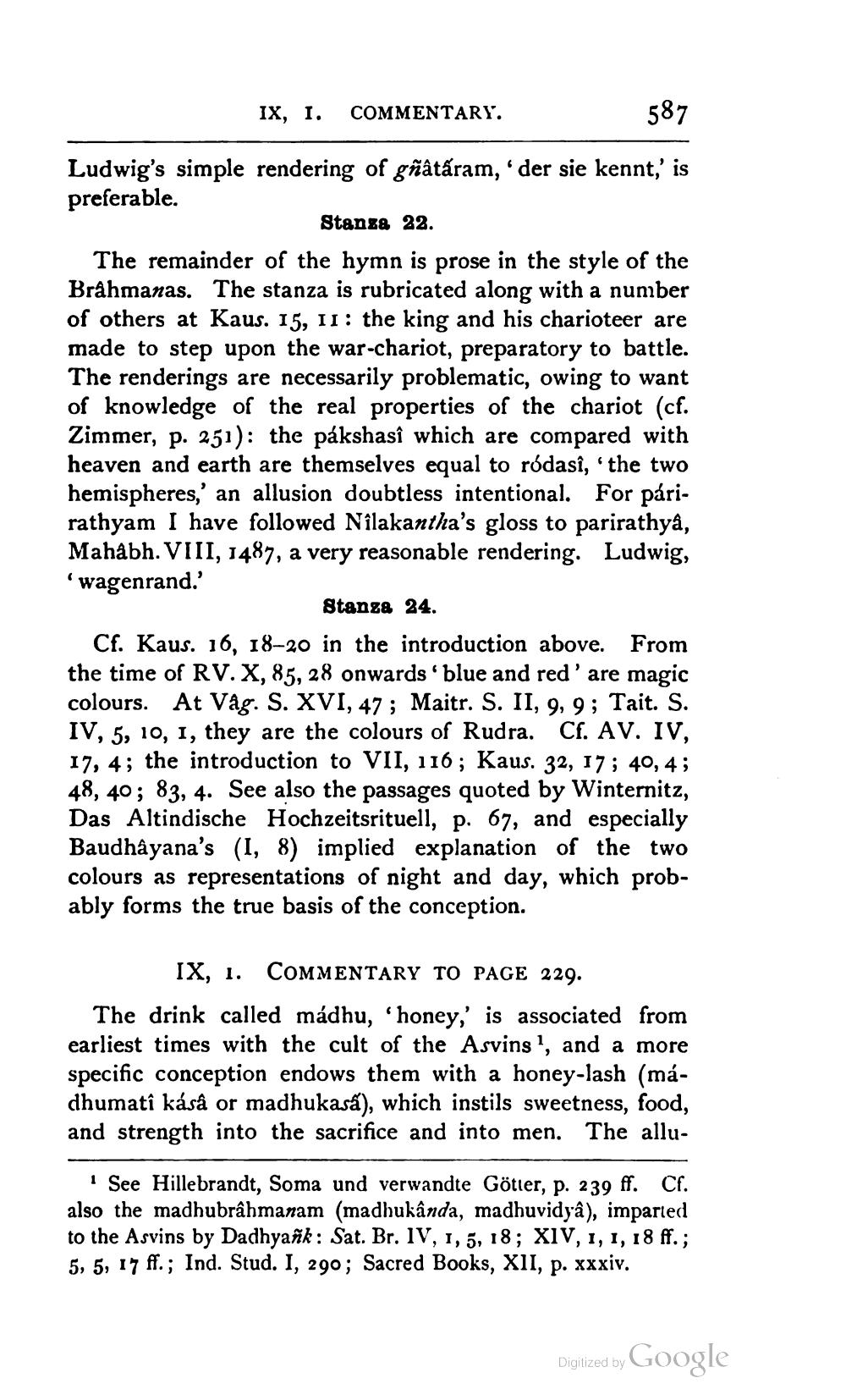________________
ix, 1. COMMENTARY.
587
Ludwig's simple rendering of gñâtáram, der sie kennt,' is preferable.
Stanse 22. The remainder of the hymn is prose in the style of the Brâhmanas. The stanza is rubricated along with a number of others at Kaus. 15, II: the king and his charioteer are made to step upon the war-chariot, preparatory to battle. The renderings are necessarily problematic, owing to want of knowledge of the real properties of the chariot (cf. Zimmer, p. 251): the pákshasî which are compared with heaven and earth are themselves equal to ródasî, 'the two hemispheres,' an allusion doubtless intentional. For párirathyam I have followed Nîlakantha's gloss to parirathya, Mahabh. VIII, 1487, a very reasonable rendering. Ludwig, 'wagenrand.'
Stanza 24. Cf. Kaus. 16, 18-20 in the introduction above. From the time of RV.X, 85, 28 onwards' blue and red' are magic colours. At Våg. S. XVI, 47 ; Maitr. S. II, 9, 9; Tait. S. IV, 5, 10, 1, they are the colours of Rudra. Cf. AV. IV, 17, 4; the introduction to VII, 116; Kaus. 32, 17; 40, 4; 48, 40; 83, 4. See also the passages quoted by Winternitz, Das Altindische Hochzeitsrituell, p. 67, and especially Baudhayana's (I, 8) implied explanation of the two colours as representations of night and day, which probably forms the true basis of the conception.
IX, 1. COMMENTARY TO PAGE 229. The drink called mádhu, 'honey,' is associated from earliest times with the cult of the Asvins, and a more specific conception endows them with a honey-lash (mádhumatî káså or madhukasa), which instils sweetness, food, and strength into the sacrifice and into men. The allu
See Hillebrandt, Soma und verwandte Götter, p. 239 ff. Cf. also the madhubrâhmanam (madhukânda, madhuvidya), imparted to the Asvins by Dadhyañk: Sat. Br. IV, 1, 5, 18; XIV, 1, 1, 18 ff.; 5, 5, 17 ff.; Ind. Stud. I, 290; Sacred Books, XII, p. xxxiv.
Digized by Google




